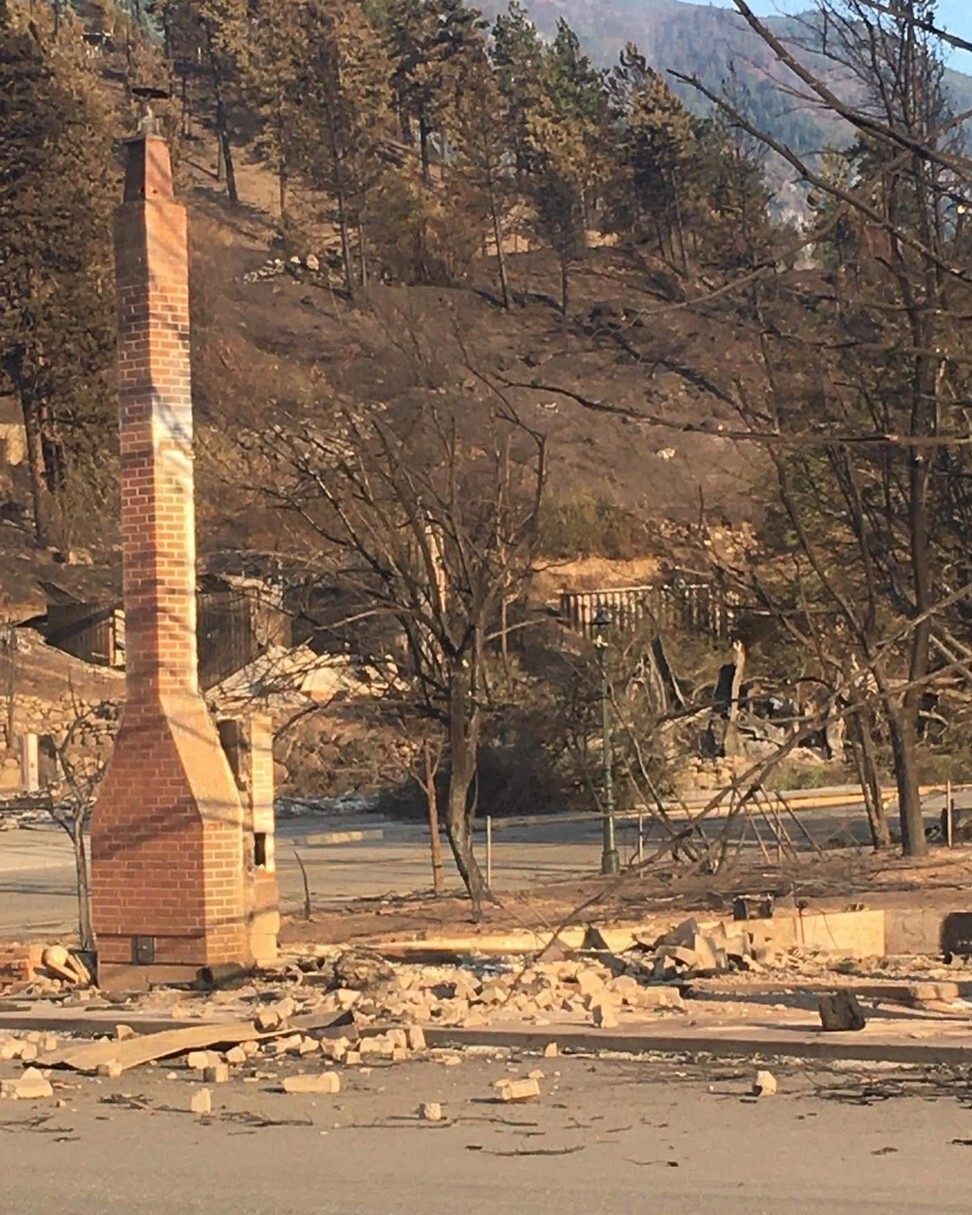
‘Heartbreaking’ destruction of Chinese-Canadian heritage, as heatwave inferno consumes museum
- The Lytton Chinese History Museum and its 1,600 artefacts were claimed by the deadly fire that razed the British Columbia village last week
- The rural museum was a testament to the rich Chinese history of the region – and the dedication of the lay historian who owned the award-winning facility
For three consecutive days last week, amid a baking heatwave in British Columbia, the inland township of Lytton shattered Canada’s temperature record, topping out at 49.6 degrees Celsius (121.3 degrees Fahrenheit).
On the fourth day, June 30, the village burned to the ground.
The inferno claimed at least two lives, nearly every building in Lytton – and a precious collection of Chinese-Canadian heritage.
One of the things that a place like Lytton does is remind us of the connections and the impact of Chinese Canadians, all across the country
The destruction of the Lytton Chinese History Museum and its 1,600 artefacts documenting the lives of the region’s Chinese miners, rail workers and others, was an “incredibly heartbreaking loss”, said Sarah Ling, president of the Chinese Canadian Historical Society of British Columbia (CCHSBC).
The museum’s “vivid and impressive” collection was a testament to both the rich Chinese history of the region and the dedication of Lorna Fandrich, the museum’s executive director, owner and lay historian, Ling said.
“One of the things that a place like Lytton does is remind us of the connections and the impact of Chinese Canadians, all across the country, in these small towns,” said Ling, a regular visitor to the museum, about 150km northeast of Vancouver.

Fandrich was among the 300 or so residents of Lytton evacuated from the town on June 30; she could not be reached for comment.
But she confirmed the destruction of the museum in a Facebook post.
“I am so saddened to say that the Lytton Chinese Museum was totally burned in the Lytton fire,” she wrote, sharing a photo of the ruins on Friday that showed “all that remains of the museum are the rock walls”.
According to the museum’s website, Fandrich and her husband Bernie have owned the museum site on Lytton’s main street since 1980. They found out that from the 1880s until 1928 it had been occupied by a Chinese temple, or “joss house”.

“Lorna began to envision a place that would honour and recognise the culture, sacrifices, and contributions of Chinese who came to Canada to mine for gold, work on the railroads and become merchants,” the website says.
For instance, when the Canadian Pacific Railway connected British Columbia to the rest of Canada in 1885, 6,500 of its 9,000 construction workers were Chinese-Canadians, hundreds of whom died during the arduous project.
The museum opened in 2017, and received a Heritage BC award for education and awareness in 2019. In May, CCHSBC honoured the museum with its Drs Wallace B. & Madeline H. Chung Prize for Chinese-Canadian community archiving.
Ling said that the museum had been a highlight of historical tours of the region conducted by the CCHSBC and others.

“The museum became one of the pivotal stops of the trip,” said Ling. “Lorna is such a kind and welcoming person, who connected communities including First Nations and members of the Chinese community.”
It was surprising for a small town like Lytton to boast a museum of such quality, Ling said. “That’s what’s striking, and to have someone like Lorna who isn’t of the Chinese community, but has that true appreciation of the Chinese history that occurred in the interior — to resurrect that space, to honour that history and celebrate it was quite a rare thing,” she said.
“Not only did she [Fandrich] have local visitors to this gem, she had tourists from mainland China, international visitors,” Ling said.
One grace was that all 1,600 items in the museum had been photographed and digitally catalogued, Fandrich wrote on Facebook.
Ling said the CCHSBC had contacted Fandrich and pledged to “help her get back on her feet however she chooses”.

The museum also served as a community gathering point; a few days before the fire, Fandrich had invited Lytton residents inside to escape the heat.
It also hosted weekly meditation sessions, led by monks from the Lions Gate Buddhist Priory, a retreat 4km (2.5 miles) north of Lytton.
Fires continue to burn in the BC interior, including a blaze of about 8,000 hectares (nearly 20,000 acres) near Lytton.
The priory’s Reverend Koten Benson said by email that its community of monks and lay people had been evacuated to Chilliwack, just outside Vancouver.
“The fire has spread to the Botanie Valley [near Lytton] but so far has not reached the priory land, as far as we know, although that can change at any time,” he said.
It is the second time that Lytton, sitting at the confluence of the Fraser and Thompson rivers, has been devastated by fire. Much of the village was destroyed by a blaze in 1931.

The cause of last week’s fire is not known, although residents have suggested it could be connected to the trains that ran through the town.
In a news release on Monday, the township said its volunteer fire department had been battling fires elsewhere when the main blaze erupted. “Once it was established in the area of town closest to the river and homes there were burning, it spread east across the streets with ferocious speed,” the township said.
“A few buildings survived in town but nearly every home in the centre of the village is gone. Where many buildings stood is now simply charred earth.”
The statement concluded: “In the coming days, weeks, months and years our hearts will break again and again as that trauma and loss is replayed in our minds and our souls.
“But we are Lytton, we are strong and we will rebuild our homes and businesses, rekindle our friendships and community, stronger and more enduring than ever.”

